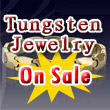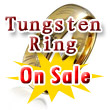Tungsten Oxide Facts
What is tungsten oxide facts?

Tungsten oxide (W2O3) is a compound of tungsten and oxygen. It has been reported (2006) as being grown as a thin film by atomic layer deposition at temperatures between 140 and 240 °C using W2(N(CH3)2)6 as a precursor. It is not referred to in major text books e.g. Some older literature refers to the compound W2O3 but as the atomic weight of tungsten was believed at the time to be 92, i.e. approximately half the modern accepted value of 183.84 the compound actually being referred to was WO3.
Tungsten oxide, also known as tungsten trioxide or tungsten anhydride, WO3, is a chemical compound containing oxygen and the transition metal tungsten. It is obtained as an intermediate in the recovery of tungsten from its minerals. Tungsten oxide is treated with alkalis to produce WO3. Further reaction with carbon or hydrogen gas reduces tungsten oxide to the pure metal.
2 WO3 + 3 C + heat → 2 W + 3 CO2
WO3 + 3 H2 + heat → W + 3 H2O
Tungsten oxide occurs naturally in form of hydrates, which include minerals: tungstite WO3·H2O, meymacite WO3·2H2O and hydrotungstite (of same composition as meymacite, however sometimes written as H2WO4). These minerals are rare to very rare secondary tungsten minerals.
Tungsten Oxide Facts of History
Tungsten has a rich history dating back to its discovery during the 18th century. Peter Woulfe was the first to recognize a new element in the naturally occurring mineral, wolframite. Tungsten was originally known as wolfram, explaining the choice of "W" for its elemental symbol. Swedish chemist Carl Wilhelm Scheele contributed to its discovery as well with his studies on the mineral scheelite.
In 1841, a chemist named Robert Oxland gave the first procedures for preparing tungsten trioxide and sodium tungstate. He was granted patents for his work soon after, and is considered to be the founder of systematic tungsten chemistry.
Preparation of Tungsten Oxide Facts
Tungsten trioxide can be prepared in several different ways. CaWO4, or scheelite, is allowed to react with HCl to produce tungstic acid, which decomposes to WO3 and water at high temperatures.
CaWO4 + 2 HCl → CaCl2 + H2WO4
H2WO4 + heat → H2O + WO3
Another common way to synthesize WO3 is by calcination of ammonium paratungstate (APT) under oxidizing conditions:
(NH4)10[H2W12O42] •4H2O → 12 WO3 + 10 NH3 + 11 H2O
Structure of Tungsten Oxide Facts
The crystal structure of tungsten trioxide is temperature dependent. It is tetragonal at temperatures above 740 °C, orthorhombic from 330 to 740 °C, monoclinic from 17 to 330 °C, and triclinic from -50 to 17 °C. The most common structure of WO3 is monoclinic with space group P21/n.
Uses of Tungsten Oxide Facts
Tungsten oxide is used for many purposes in everyday life. It is frequently used in industry to manufacture tungsten for x-ray screen phosphors, for fireproofing fabrics and in gas sensors. Due to its rich yellow color, WO3 is also used as a pigment in ceramics and paints.
In recent years, tungsten trioxide has been employed in the production of electro chromic windows, or smart windows. These windows are electrically switchable glass that change light transmission properties with an applied voltage. This allows the user to tint their windows, changing the amount of heat or light passing through.
2010- AIST reports a quantum yield of 19 % in photocatalytic water splitting with a cesium-enhanced tungsten oxide photocatalyst.
Tungsten Oxide Facts of Synonyms:
Tungsten oxide, tungsten oxide (WO2), tungsten oxide (WO3), tungsten trioxide, tungsten trioxide, tungsten anhydride, CAS#1314-35-8 (WO3), tungsten pent oxide, tetra tungsten undecaoxide, tungsten oxide, tungsten oxide (W2O5), sheltie, wolfram, firebrat tungsten oxide (W4O11).
If you have any interest in tungsten oxide facts, please feel free to contact us by email: sales@chinatungsten.com, sales@xiamentungsten.com or by telephone: +86 592 5129696.






 sales@chinatungsten.com
sales@chinatungsten.com